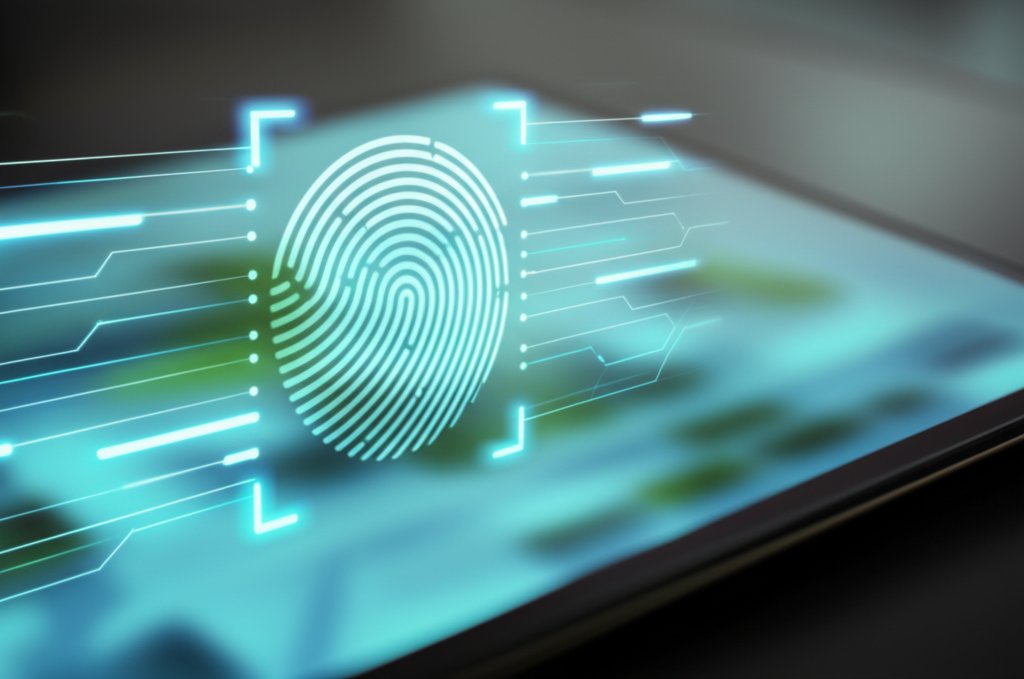In our increasingly digital world, the boundaries between work and personal life, physical office and remote workspace, and on-premises and cloud infrastructure have fundamentally blurred. We are all, whether we realize it or not, operating within complex “hybrid environments.” Perhaps you’re accessing work applications from your home office, storing critical documents in cloud drives, or managing a small business with team members collaborating from various locations. This flexibility offers undeniable advantages, fostering greater productivity and convenience.
However, this flexibility introduces a critical question: how robust is your data security in such a dynamic landscape? Traditional security models, often conceptualized as a “castle-and-moat,” are no longer sufficient. These models mistakenly assume that everything inside the network perimeter is inherently trustworthy, while everything outside is hostile. Unfortunately, modern cyber threats do not respect these antiquated boundaries.
This is precisely why we must shift our focus to constructing a truly resilient “digital fortress” using a modern cybersecurity strategy known as Zero-Trust Identity. It’s a powerful, actionable concept that anyone can understand and implement, regardless of their technical background. This isn’t just for large enterprises; your digital security, whether for personal data protection or robust small business cybersecurity, necessitates this forward-thinking approach.
Ready to reclaim control over your digital security posture? Let’s begin.
What You’ll Learn
By the end of this guide, you’ll have a clear understanding of:
- What Zero-Trust Identity truly means, beyond the jargon.
- Why this approach is essential for protecting your information in today’s hybrid digital world and enhancing your hybrid cloud security posture.
- The core principles that form the backbone of a robust Zero-Trust strategy.
- Actionable, practical steps you can take today to start fortifying your digital fortress, whether you’re an everyday internet user or implementing cybersecurity for small businesses.
- An internet-connected device (computer, smartphone, tablet).
- A willingness to review and adjust your current online security habits.
- Access to your various online accounts (email, banking, social media, work apps, etc.) and device settings.
- Internalize the core principle: Assume that any access request, from any user or device, could be malicious until proven otherwise. This is vital for robust data protection.
- Recognize that this isn’t about paranoia; it’s about being proactive and building resilience against increasingly sophisticated cyber threats in hybrid work environments.
Prerequisites
You don’t need any specialized tools or deep technical knowledge to get started. All you really need is:
Time Estimate & Difficulty Level
Difficulty Level: Beginner
Estimated Time: 30-45 minutes (for reading and initial conceptual steps)
What is Zero-Trust Identity, Really?
Beyond the buzzwords, Zero-Trust Identity is a fundamental paradigm shift in how we approach digital security. At its core, it embodies the principle of “never trust, always verify.” This means that no user, device, or application is implicitly trusted, regardless of whether they are inside or outside your traditional network perimeter. Every single access attempt to any resource must be explicitly verified and authorized before access is granted.
In a hybrid environment, where resources are distributed across on-premises and cloud infrastructures, and users connect from various locations and devices, identity becomes the new security perimeter. Zero-Trust Identity specifically focuses on strong identity authentication and authorization as the primary defense mechanism for all secure access for remote workers and sensitive data.
Think of it not as a specific product you buy, but as a strategic approach to identity and access management best practices that fundamentally re-evaluates and secures every digital interaction.
Step 1: Internalize the "Never Trust, Always Verify" Mindset
The very first step in constructing your Zero-Trust digital fortress is adopting a new way of thinking. It’s a critical philosophical shift from “trust, but verify” to “never trust, always verify.” What does this mindset truly entail?
It means that you should never implicitly trust anything or anyone—be it a user, a device, or an application—inside or outside your network, until their identity, authorization, and the integrity of their request are explicitly and continuously verified. Imagine a highly vigilant security guard who checks your ID every single time you wish to enter a room, not just upon your initial entry into the building. Even if you are an employee, or were just in the adjacent room, your credentials must be re-verified.
Instructions:
Configuration Concept (Conceptual):
Policy: "ImplicitDenyAll"
-> All access requests are denied by default. -> Only explicitly allowed and thoroughly verified requests proceed.
Expected Output:
A mental shift where you question default assumptions about security. You start to think: "How do I know this is genuinely allowed and safe?"
Tip: This foundational mindset is your most powerful tool; it will guide every subsequent action you take in your journey towards a Zero-Trust architecture.
Step 2: Prioritize Identity as Your New Perimeter
In the obsolete “castle-and-moat” model, your network boundary was considered your primary defense. However, with the proliferation of hybrid environments—individuals working remotely, utilizing diverse cloud applications, and accessing data from any location—that traditional perimeter has effectively dissolved. Your new, critical perimeter is identity: specifically, the validated identities of users and their associated devices.
Every individual and every device attempting to access your data or systems represents a potential entry point for attackers. Therefore, diligently securing those identities becomes paramount for comprehensive hybrid work security. This fundamental shift is precisely why this strategy is termed Zero-Trust Identity.
Instructions:
- Recognize that every online account you possess (email, banking, social media, work platforms) represents a critical identity that demands robust protection and adherence to identity and access management best practices.
- Understand that your personal devices (laptops, phones) are integral extensions of your digital identity within this modern landscape.
Configuration Concept (Conceptual):
Focus: "Who" and "What"
-> Who is the user? (Rigorous identity authentication) -> What device are they using? (Device authentication and health assessment) -> NOT: Where are they? (Location is far less relevant than explicit verification)
Expected Output:
A clear understanding that strong identity management is the indispensable foundation of your modern cybersecurity strategy, crucial for protecting sensitive data in cloud environments.
Tip: If an attacker successfully compromises an identity (your login credentials), they can often bypass many traditional network-based defenses, highlighting the importance of this shift.
Step 3: Verify Explicitly with Multi-Factor Authentication (MFA)
The “always verify” component of Zero Trust demands more than just a single password. It necessitates robust authentication for every access request. The industry gold standard for achieving this explicit verification is Multi-Factor Authentication (MFA).
MFA requires you to provide two or more distinct verification methods to unequivocally prove your identity. This typically combines something you know (like a password), something you have (such as your phone or an authenticator app), and/or something you are (like a fingerprint or facial scan). Crucially, even if a cybercriminal manages to obtain your password, they cannot gain unauthorized entry without that critical second factor. This is a vital step for secure access for remote workers and overall data privacy in hybrid work.
Instructions:
- Enable MFA on every single account that offers it. This is a non-negotiable step for all critical accounts, including email, banking, social media, and work applications.
- For small businesses, mandate MFA for all employees across all company resources. This is a foundational element of effective cybersecurity for small businesses.
- Consider leveraging a reputable password manager to generate and securely store strong, unique passwords for each of your accounts, simplifying adherence to best practices.
Configuration Example (Conceptual):
Authentication Policy:
- Factor 1: Password (something you know)
- Factor 2: One-Time Code from Authenticator App or SMS (something you have)
- Result: Access granted ONLY if both factors are successfully verified, significantly enhancing data protection.
Expected Output:
A significantly higher barrier for unauthorized access to your accounts. You’ll feel more secure knowing that a stolen password alone is insufficient for an attacker to breach your defenses.
Pro Tip: For the strongest protection, prioritize authenticator apps (such as Google Authenticator, Microsoft Authenticator, or Authy) or dedicated hardware security keys over SMS-based MFA, which can be vulnerable to specific attack types. Learn more about these advanced security practices for optimal multi-factor authentication for data protection.
Step 4: Grant Least Privilege Access
Another fundamental cornerstone of Zero Trust, integral to zero trust architecture principles, is the principle of “least privilege.” This dictates that users and devices should only be granted the absolute minimum access rights and permissions necessary to perform their specific tasks, and only for the duration required. Visualize it like a guest in your home: they receive a key to their designated room, not to the entire residence. Or, consider a contractor on a job site: they are granted access solely to the specific area where their work is required, not the entire property.
If an account or device does unfortunately become compromised, the application of least privilege ensures that the attacker’s reach is severely limited, thereby minimizing the potential damage and preventing lateral movement within your systems. This is crucial for data protection in cloud environments.
Instructions:
- For shared files/folders: Regularly review who has access to your cloud storage (e.g., Google Drive, Dropbox, OneDrive) or shared network drives. Promptly remove access for anyone who no longer requires it. This is a key aspect of data privacy in hybrid work.
- For software/apps: Be highly mindful of the permissions you grant to applications on your phone or computer. Does that game truly require access to your contacts or microphone?
- For small businesses: Establish separate user accounts for distinct roles (e.g., a "Marketing Manager" account should not possess "Finance Manager" access). Avoid the common pitfall of using a single "admin" account for day-to-day operational tasks. This significantly strengthens your cybersecurity for small businesses.
Configuration Concept (Conceptual):
Access Policy for User 'Jane' (Marketing):
- Access: Read/Write to Marketing Folder (Cloud Storage)
- Access: Read-Only to Sales Reports (Internal Server)
- NO Access: Financial Records
- NO Access: HR Employee Data
Expected Output:
A significantly reduced “blast radius” in the unfortunate event of a breach. If a single account is compromised, the attacker cannot easily move laterally to access all your sensitive data, protecting your hybrid cloud security posture.
Tip: When in doubt, deny access by default. It is always easier to grant it later if genuinely needed than to revoke it after a damaging breach has occurred.
Step 5: Assume Breach and Prepare for the Worst
No security system, regardless of how advanced, is entirely foolproof. Zero Trust rigorously operates on the principle of “assume breach,” meaning you proactively operate under the realistic assumption that a breach will happen at some point, not if it happens. This isn’t a pessimistic outlook; it’s a pragmatic and empowering one that focuses on building exceptional resilience.
By operating under an assumed breach, your focus shifts to minimizing the impact of an incident, detecting it rapidly, and recovering efficiently. This approach is central to effective incident response planning.
Instructions:
- Regular Backups: Implement a robust and consistent backup strategy for all your important data. Adhere to the widely recommended 3-2-1 rule: maintain 3 copies of your data, store them on 2 different media types, with at least 1 copy located offsite (e.g., secure cloud backup).
- Isolate Sensitive Data: Keep your most sensitive and critical information in encrypted folders or secure cloud vaults, distinct and separate from everyday files. This enhances protecting sensitive data in cloud environments.
- Monitor for Unusual Activity: Enable activity logging or notification alerts on your cloud accounts (e.g., "login from a new device" alerts) and review them periodically for any suspicious patterns.
Configuration Concept (Conceptual):
Resilience Strategy:
- Backup Schedule: Daily for critical data, weekly for others.
- Data Classification: Identify 'Sensitive', 'Confidential', 'Public'.
- Alert Rules: Notify on 'Failed Login Attempts > 5', 'Unusual Access Location'.
Expected Output:
A profound sense of peace of mind, knowing that even if a breach occurs, you have a predefined plan to minimize damage and restore your data quickly. This also leads to faster detection of potential threats, improving your overall hybrid cloud security posture.
Tip: Regularly test your backups! There is no greater heartache than discovering your backups were corrupted or incomplete precisely when you desperately need them.
Step 6: Secure Your Devices (Your Digital Locks)
Your devices—laptops, smartphones, tablets—are crucial endpoints in your hybrid digital environment. They are the primary tools you use to access all your identities and data. Therefore, diligently securing them is a fundamental and non-negotiable component of a comprehensive Zero-Trust strategy, forming the basis of strong endpoint security for hybrid environments.
Instructions:
- Keep Software Updated: Regularly and promptly install updates for your operating system (Windows, macOS, iOS, Android) and all installed applications. These updates frequently include critical security patches that address newly discovered vulnerabilities.
- Use Antivirus/Anti-malware: Install and actively maintain reputable antivirus or anti-malware software on all your computers. Many modern operating systems offer excellent built-in options (e.g., Windows Defender) that should be utilized.
- Encrypt Your Devices: Enable full-disk encryption on your laptops and phones. This crucial step ensures that if your device is lost or stolen, your sensitive data remains unreadable and inaccessible without the correct password or decryption key. This is key for data privacy in hybrid work.
- Understand BYOD (Bring Your Own Device) Risks: If you use personal devices for work (or vice-versa), it is imperative to understand that a security compromise on your personal side can potentially impact your work-related data and access. Endeavor to keep work applications and data isolated and robustly secured on such devices.
Expected Output:
Devices that are significantly less vulnerable to common exploits and unauthorized data access, even in scenarios where they are physically compromised. This elevates your overall hybrid work security.
Pro Tip: For enhanced security, consider establishing separate user profiles on your computer for distinct activities (e.g., one profile for work tasks, another for personal browsing) to further isolate and contain potential threats.
Expected Final Result
After embracing and systematically implementing these Zero-Trust Identity principles, you will achieve far more than just a collection of disparate security tools. You will experience a fundamental and transformative shift in how you approach digital security. Your “digital fortress” will be profoundly more resilient, characterized by:
- Stronger Identity Protection: Your accounts will become significantly more difficult for sophisticated attackers to compromise, thanks to enhanced identity and access management best practices.
- Limited Damage Potential: Should an attacker somehow gain initial entry, their ability to move freely and access all your sensitive data will be severely restricted by least privilege access.
- Faster Detection & Recovery: You will be far better equipped to swiftly spot unusual activity and recover efficiently from any security incidents, improving your hybrid cloud security posture.
- Greater Peace of Mind: You will gain confidence and assurance, knowing that you are proactively employing cutting-edge strategies to protect your valuable digital assets in a complex, hybrid world, ensuring robust data protection.
Troubleshooting Common Issues & Misconceptions
"This sounds too complex for me/my small business!"
- Solution: Zero Trust is best viewed as a continuous journey, not a singular destination. Begin incrementally! Focus initially on foundational steps like universally enabling MFA and regularly reviewing access permissions. It is fundamentally a mindset shift, not necessarily an immediate, expensive technology overhaul.
- Why it’s not true: You are not required to purchase a specific “Zero Trust product.” Many of the most impactful steps (MFA, password managers, systematic backups) are either free or low-cost and primarily rely on the establishment of good, consistent security habits. This makes it highly accessible for cybersecurity for small businesses.
"Won’t this slow down work or make things difficult?"
- Solution: Initially, there might be a minor adjustment period as new habits are formed. However, modern security solutions are specifically designed to be as seamless and non-intrusive as possible. For example, once MFA is configured, it often requires only a quick tap on your smartphone. The substantial security gains invariably far outweigh any minor, initial inconveniences.
- Why it’s not true: A well-implemented Zero-Trust strategy actually reduces friction in the long run by establishing clear, consistent, and predictable access policies that everyone understands, ultimately boosting productivity by minimizing disruptive security incidents.
"I don’t have anything valuable enough to protect."
- Solution: Reconsider this perspective. Your personal information, cherished photos, banking details, and even your social media accounts hold immense value. For businesses, customer data, proprietary intellectual property, and the very ability to conduct operations are priceless. A breach can lead to devastating identity theft, significant financial loss, irreparable reputational damage, and severe operational disruption.
- Why it’s not true: Everyone is a potential target. Cybercriminals are not exclusively focused on specific high-value targets; more often, they are simply seeking any vulnerability they can exploit for financial gain or disruption, making strong data protection universally essential.
Advanced Tips
- Consider a VPN: For everyday internet users, a Virtual Private Network (VPN) can add an extra layer of privacy and security, especially when you are compelled to use unsecured public Wi-Fi networks.
- Network Microsegmentation (for small businesses): If your business operates a more complex network infrastructure, explore the concept of microsegmentation. This advanced technique divides your network into smaller, isolated segments, severely limiting an attacker’s lateral movement even if they manage to breach one segment. This enhances your hybrid cloud security posture.
- Security Awareness Training: For small businesses, regular and mandatory training for all employees on recognizing phishing attempts, social engineering tactics, and general secure practices is absolutely vital. Your people represent either your strongest or weakest link in the security chain.
- Incident Response Plan: Develop a clear and concise plan outlining the steps to take if you suspect a security incident (e.g., who to contact, how to safely disconnect affected devices, how to rapidly change compromised passwords).
What You Learned
You’ve successfully navigated the core concepts and practical applications of Zero-Trust Identity! You now understand that:
- Traditional “castle-and-moat” security is outdated and ineffective in today’s hybrid digital landscape, requiring new zero trust architecture principles.
- Zero Trust is a critical mindset of “never trust, always verify,” placing validated identity at the absolute center of your security strategy for secure access for remote workers.
- The three guiding pillars—Explicit Verification, Least Privilege, and Assume Breach—are your foundational principles for robust data protection.
- Practical, achievable steps like enabling MFA, utilizing strong passwords, implementing data backups, and ensuring device encryption are crucial, actionable measures for everyone, enhancing your endpoint security for hybrid environments.
Next Steps
Do not allow your digital security journey to conclude here! It is an ongoing, evolving process. We strongly encourage you to:
- Implement MFA today on at least one critical account where you haven’t already enabled it.
- Review permissions on your shared cloud files and folders to ensure adherence to least privilege.
- Subscribe to our blog for continuous actionable security tips and insightful guides that cover topics like hybrid work security and data privacy in hybrid work.
- Stay informed about emerging cyber threats and evolving security best practices.
Conclusion: Your Fortified Future
Fortifying your digital fortress with Zero-Trust Identity isn’t merely a recommendation; it is an indispensable strategy for navigating our increasingly complex, hybrid digital world. While the scope might initially seem extensive, remember that you do not have to implement everything simultaneously. By consciously adopting the “never trust, always verify” mindset and consistently taking these practical, incremental steps, you are not simply reacting to threats; you are proactively building profound resilience and empowering yourself with a demonstrably stronger security posture.
Ultimately, it’s about taking confident control of your digital destiny, isn’t it? So, we urge you to try these steps yourself and share your experiences and results in the comments below! Follow us for more practical tutorials and essential insights that will help you stay safe and secure online.









